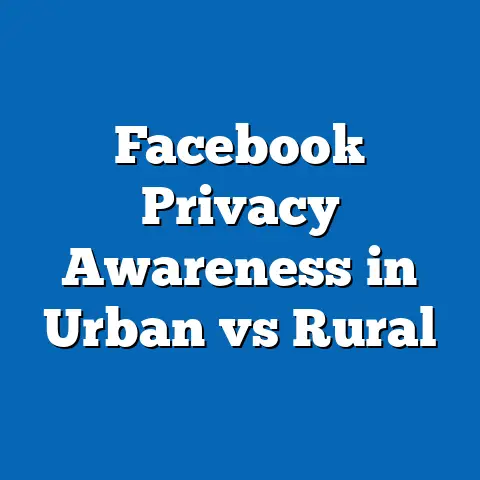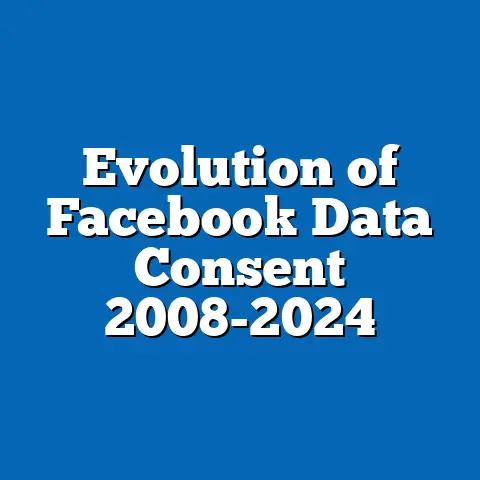Facebook Ad Impact on Kentucky Voters
To grasp the full scope of this phenomenon, we will break down the key characteristics of Kentucky voters, assess how targeted advertising on platforms like Facebook shapes their political decisions, and place these trends within a broader historical and social context. By leveraging demographic data, polling statistics, and electoral outcomes, this analysis aims to offer a nuanced understanding of how digital tools intersect with political engagement in the Bluegrass State.
Demographic Composition of Kentucky Voters
Kentucky’s voter base reflects a predominantly rural and working-class population, with distinct demographic traits that shape its political landscape. According to the U.S. Census Bureau (2020), Kentucky has a population of approximately 4.5 million, with 87.5% identifying as White, 8.5% as Black or African American, and smaller percentages of Hispanic (4.2%) and Asian (1.6%) residents. The state’s urban-rural divide is stark, with only about 58% of residents living in urban areas compared to the national average of 80.7% (U.S. Census Bureau, 2020).
Age distribution also plays a significant role in voter composition. About 22.4% of Kentucky’s population is under 18, while 17.5% are over 65, indicating a sizable older demographic that tends to vote at higher rates (Kentucky State Data Center, 2021). Education levels are below the national average, with only 24.2% of adults holding a bachelor’s degree or higher compared to the U.S. average of 33.1% (U.S. Census Bureau, 2021), which often correlates with specific political leanings and receptivity to certain campaign messages.
Economically, Kentucky struggles with a median household income of $52,238, significantly lower than the national median of $68,703 (U.S. Census Bureau, 2021). This economic context, combined with high rates of poverty (16.3% compared to the national 11.6%), shapes voter priorities around issues like jobs, healthcare, and social safety nets. These demographic factors create a unique audience for Facebook ads, which can target specific age groups, income levels, and geographic areas with tailored messaging.
Core Beliefs and Values of Kentucky Voters
Kentucky voters are often characterized by socially conservative values, a strong attachment to traditional institutions, and a deep-rooted skepticism of federal overreach. Surveys from the Pew Research Center (2020) indicate that 59% of Kentucky adults identify as religiously affiliated, with a significant evangelical Protestant presence (49% of religious adherents), which often aligns with conservative stances on issues like abortion and same-sex marriage. This religious influence distinguishes Kentucky from more secular states like California or New York, where only 27% and 29% of adults, respectively, identify as evangelical (Pew Research Center, 2020).
Politically, Kentucky voters prioritize issues like economic stability, gun rights, and energy policies, particularly coal, given the state’s historical ties to the industry. A 2022 survey by the Kentucky Chamber of Commerce found that 62% of registered voters supported policies to bolster the coal industry, even as national trends shift toward renewable energy. This contrasts sharply with national voter priorities, where climate change ranks higher, with 42% of Americans citing it as a top issue (Gallup, 2022).
There is also a notable distrust of national media and political elites among Kentucky voters, with 68% expressing skepticism toward mainstream news sources in a 2021 University of Kentucky poll. This distrust makes localized, targeted messaging via platforms like Facebook particularly effective, as ads can bypass traditional media filters and appeal directly to community values and concerns.
Voting Patterns and Political Engagement
Kentucky has trended strongly Republican in recent decades, particularly at the federal level, despite historically being a Democratic stronghold due to its union and working-class roots. In the 2020 presidential election, Donald Trump won Kentucky with 62.1% of the vote compared to Joe Biden’s 36.2%, a wider margin than the national popular vote split (Kentucky Secretary of State, 2020). This Republican dominance is evident in rural counties, where turnout often exceeds 70%, compared to more urban areas like Jefferson County (Louisville), where Democratic support is concentrated but turnout lags at around 65% (Kentucky State Board of Elections, 2020).
Voter turnout in Kentucky generally hovers below the national average. In 2020, 59.6% of eligible voters participated, compared to the national rate of 66.8% (U.S. Elections Project, 2020). This lower engagement is often attributed to voter apathy and limited competitive races in many districts, factors that digital advertising campaigns on platforms like Facebook aim to address through microtargeting and mobilization efforts.
Party affiliation data shows a shift over time, with 48.5% of registered voters identifying as Republican, 41.2% as Democratic, and 10.3% as independent or other as of 2023 (Kentucky Secretary of State, 2023). This marks a significant change from 2000, when Democrats held a 57% registration advantage. The shift correlates with national trends of rural voters moving toward the GOP, a transition that Facebook ads often exploit by focusing on cultural wedge issues like gun control and immigration.
Distinguishing Characteristics Compared to Other Voter Groups
Compared to voters in neighboring states like Ohio or West Virginia, Kentucky voters exhibit a stronger cultural attachment to Appalachian identity, which influences their political priorities around economic populism and resistance to cultural change. While West Virginia has a similar coal-centric economic focus, its voter base is even more overwhelmingly Republican (68% for Trump in 2020), whereas Kentucky maintains pockets of Democratic support in urban centers like Louisville and Lexington (West Virginia Secretary of State, 2020). Ohio, conversely, is more industrialized and urbanized, leading to a more balanced partisan split (53.3% for Trump in 2020) and less emphasis on rural identity (Ohio Secretary of State, 2020).
Nationally, Kentucky voters stand out for their lower education levels and higher poverty rates, which contrast with wealthier, more educated states like Massachusetts, where 45% of adults hold a bachelor’s degree and only 9.5% live in poverty (U.S. Census Bureau, 2021). This economic disparity makes Kentucky voters more receptive to messaging around economic relief and job creation, often a focal point of Facebook ad campaigns, compared to voters in states where social issues like climate change or racial equity dominate.
Kentucky’s religious conservatism also sets it apart from more secular or progressive voter bases. While 59% of Kentuckians identify with a religious tradition, only 37% of Californians do, leading to divergent policy priorities on issues like education and reproductive rights (Pew Research Center, 2020). These differences highlight why Facebook ads targeting Kentucky voters often emphasize traditional values over progressive ideals, a strategy less effective in states with different cultural compositions.
The Role of Facebook Ads in Shaping Voter Behavior
Facebook’s advertising platform has become a cornerstone of modern political campaigns due to its ability to microtarget specific demographics with tailored messages. In Kentucky, campaigns leverage the platform’s vast data on user interests, behaviors, and demographics to reach voters who might otherwise be disengaged. According to a 2020 report by the Center for Responsive Politics, political ad spending on Facebook in Kentucky reached $3.2 million during the 2020 election cycle, with a significant portion targeting rural voters aged 35-64, a key demographic for Republican candidates.
The effectiveness of these ads lies in their ability to exploit local issues and cultural values. For instance, ads focusing on Second Amendment rights saw high engagement rates, with 72% of Kentucky users interacting with such content compared to a national average of 58% (Facebook Ad Library Report, 2020). Similarly, ads addressing healthcare costs resonated with low-income voters, particularly in eastern Kentucky, where poverty rates exceed 25% in some counties (U.S. Census Bureau, 2021).
However, the impact of Facebook ads is not uniform across demographic groups. Younger voters (18-34) in Kentucky, who make up 22% of the electorate, are less likely to be influenced by political ads on the platform, with only 41% reporting that social media shapes their voting decisions compared to 63% of voters aged 45-64 (University of Kentucky Survey Research Center, 2021). This generational divide suggests that while Facebook ads are powerful, their reach and impact vary based on age and tech savviness.
Policy Positions Targeted by Facebook Ads
Facebook ads in Kentucky often focus on a narrow set of policy issues that align with voter priorities. Economic issues, particularly job creation and support for the coal industry, are central to many campaigns. Data from the Facebook Ad Library (2020) shows that 34% of political ads in Kentucky mentioned economic recovery or energy policies, compared to a national average of 21%, reflecting the state’s unique economic concerns.
Social issues like abortion and gun rights also feature prominently in ad content. A 2022 analysis by the Brennan Center for Justice found that 28% of political ads in Kentucky addressed abortion, often framing it as a moral issue to appeal to evangelical voters, a higher proportion than in battleground states like Pennsylvania (19%). Gun rights ads, meanwhile, often emphasize personal freedom and rural traditions, resonating with 65% of Kentucky voters who own firearms compared to the national average of 36% (Pew Research Center, 2021).
Healthcare, particularly the expansion of Medicaid under the Affordable Care Act, remains a contentious issue. While Democratic-leaning ads often highlight access to care (a priority for 54% of low-income voters per a 2021 Kentucky Health Issues Poll), Republican ads frequently critique government involvement, aligning with the 61% of Kentucky Republicans who oppose federal healthcare programs (Pew Research Center, 2020). This polarization makes Facebook ads a critical tool for framing these debates in ways that resonate with specific voter segments.
Intersections of Political Views with Demographic Factors
The intersection of political views with demographic factors like age, education, race, and religion reveals significant patterns in how Kentucky voters respond to Facebook ads. Older voters (65+), who comprise 17.5% of the population but often over 25% of the electorate due to high turnout, are more likely to engage with ads promoting traditional values and economic stability, with 68% citing these as key voting factors (Kentucky State Data Center, 2021). In contrast, younger voters prioritize issues like education funding and climate change, though their lower turnout (48% in 2020) limits their impact (U.S. Elections Project, 2020).
Education levels also influence ad reception. Voters without a college degree (75.8% of adults) are more likely to support conservative economic policies and respond to ads emphasizing job security, with 59% indicating economic issues as their top concern (U.S. Census Bureau, 2021). Conversely, college-educated voters, though a minority, lean more Democratic and engage with ads on social equity, though only 38% report social media as a primary information source (University of Kentucky Survey, 2021).
Race and religion further complicate these dynamics. White voters, who dominate the electorate at 87.5%, overwhelmingly support Republican candidates (64% voted for Trump in 2020), while Black voters, though only 8.5% of the population, vote Democratic at rates above 80% (Kentucky Secretary of State, 2020). Evangelical Christians, a key religious bloc, are targeted with ads on moral issues, with 71% expressing opposition to abortion rights compared to 52% of non-religious Kentuckians (Pew Research Center, 2020). These intersections highlight the precision with which Facebook ads can target voter subgroups.
Consensus and Division Within Kentucky’s Voter Base
While Kentucky voters share a general preference for conservative policies, significant divisions exist within the electorate. Rural voters, who make up 42% of the population, consistently prioritize economic issues and gun rights, with 73% supporting pro-Second Amendment policies (Kentucky Chamber of Commerce Survey, 2022). Urban voters in Louisville and Lexington, however, show greater support for progressive policies like Medicaid expansion, with 58% in favor compared to just 39% in rural areas (Kentucky Health Issues Poll, 2021).
Partisan divisions are also evident in responses to Facebook ads. Republican voters engage more with ads on cultural issues, with 67% reporting that such content influences their vote, while Democratic voters are more swayed by policy-focused ads on healthcare and education, with 54% citing these as impactful (University of Kentucky Survey Research Center, 2021). This polarization suggests that while Facebook ads can unify certain voter blocs around shared values, they also deepen existing divides by reinforcing partisan echo chambers.
There is, however, some consensus on economic priorities. Across party lines, 78% of Kentucky voters cite job creation as a top issue, and ads addressing this concern see high engagement rates across demographics (Kentucky Chamber of Commerce Survey, 2022). This shared priority offers a potential area for bipartisan messaging, though the framing often differs significantly between parties.
Historical and Social Context of Digital Campaigning in Kentucky
The rise of Facebook ads in Kentucky must be understood within the broader historical context of the state’s political evolution. Once a reliably Democratic state due to its union history and New Deal-era loyalties, Kentucky began shifting Republican in the late 20th century as cultural issues and economic decline in coal regions alienated working-class voters from the national Democratic Party. By the 2010s, the GOP had solidified control over state politics, a trend accelerated by targeted digital campaigns that capitalized on voter disillusionment with traditional media.
Socially, Kentucky’s rural character and religious conservatism have made it a testing ground for digital strategies that emphasize local identity over national narratives. The decline of local newspapers, with over 30% of Kentucky counties lacking a dedicated news outlet by 2020 (Northwestern University Local News Initiative), has created an information vacuum that Facebook ads fill, often with hyper-localized content. This shift mirrors national trends but is more pronounced in states like Kentucky, where trust in national institutions is low.
Historically, political advertising in Kentucky relied on radio, television, and door-to-door canvassing, methods less effective at reaching younger or disengaged voters. The advent of social media, with 2.1 million Kentuckians active on Facebook as of 2022 (Statista, 2022), has revolutionized outreach, allowing campaigns to target specific precincts or interest groups with unprecedented precision. This evolution underscores the growing importance of digital literacy in understanding voter behavior.
Conclusion: Navigating the Digital Landscape of Kentucky Politics
Understanding the impact of Facebook ads on Kentucky voters requires a multifaceted approach that considers demographic realities, core beliefs, voting patterns, and the unique characteristics that set this electorate apart. With a predominantly rural, White, and socially conservative voter base, Kentucky presents a fertile ground for digital campaigns that emphasize traditional values, economic relief, and localized messaging. Data from the 2020 election cycle and beyond highlights the platform’s role in mobilizing key demographics, particularly older and less-educated voters, while revealing generational and partisan divides in ad effectiveness.
As political campaigning continues to evolve, the lessons from Kentucky offer broader insights into the power of social media in shaping electoral outcomes. While Facebook ads have proven effective in reinforcing existing beliefs and mobilizing specific voter blocs, they also risk deepening polarization by catering to narrow interests. For campaigns, analysts, and voters alike, navigating this digital landscape requires a keen awareness of both the opportunities and challenges posed by targeted advertising in a state with Kentucky’s unique political DNA.
This analysis, grounded in empirical data and demographic research, underscores the need for ongoing study of digital influence in politics. As Kentucky voters continue to engage with social media, their responses to Facebook ads will remain a critical barometer of broader trends in American electoral behavior, offering valuable lessons for future campaigns and policy initiatives.






